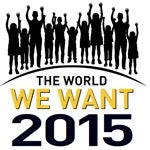
More people today have access to a cell phone than to a clean toilet. At the current rate of progress the world will miss the global sanitation target for 2015 by over half a billion people. And while the drinking water global target was met last year, nearly a billion people still lack access to an improved drinking water source. Most of these statistics are well known by water and sanitation experts, and the wider development community. Perhaps, less known is the economic cost of the water and sanitation crisis.
Poor sanitation and water supply result in economic losses estimated at US$260 billion annually in developing countries, or 1.5% of their GDP. The benefits from meeting the water supply and sanitation (WSS) MDG targets combined equal over US$60 billion annually and combined WSS interventions have a US$4.3 return for every dollar invested.
The main contributor to benefits from universal coverage of sanitation and water supply is the value of time savings from closer access and reduced queuing for sanitation and water supply facilities, which account for more than 70% of total benefits globally. This provides a clear case for investing in water supply and sanitation services as opposed to only in health measures like vaccination programs. Additional benefits that are not consistently estimated due to lack of underlying data as well as difficulties in converting some impacts to monetary values include improved water quality in lakes, rivers and coastal waters, a net gain in usable land space due to isolating human excreta, the increase in property values, and tourism revenues. The Southeast Asia ESI study crudely estimated tourism losses for Cambodia, Indonesia, the Philippines and Vietnam to cost US$350 million annually.
Given the very significant benefits from providing sanitation and water services, and the highly favorable returns on these investments, world and national leaders should step up to ensure that the required costs of achieving MDG targets are financed - US$115 billion for sanitation and US$30 billion for water supply (for individual countries that have not met the MDG target). The focus of international efforts to meet these global targets also needs to shift to the countries most in need, and the most needy populations in those countries.
Improved sanitation and water supply has implications for not only malnutrition reduction, child health, access to safe drinking water and the quality of life of marginal populations, but also poverty as a whole. This makes investment in improved sanitation and water supply a key variable in the attainment of equitable and sustainable socio-economic development. Hence, drinking-water and sanitation should be central elements of the discussions on goals and targets for post-2015. Indeed, we should be more ambitious than we have been so far – encouraging governments to think beyond basic household supply to considering measuring drinking-water quality, reducing release of untreated sewage and wastewater to the environment, and institutional WASH (e.g. schools and health facilities) and public sanitation.
Join the discussion online, including a live Q&A, Thursday, February 14, 9 a.m. EST.


Join the Conversation